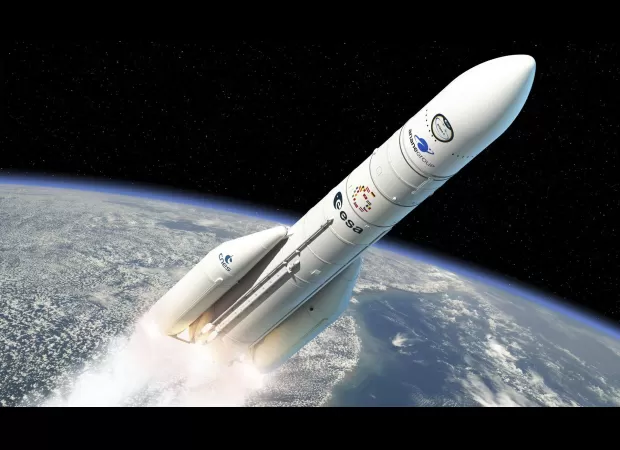New European rocket to aid in search for origin of unknown radio signals.
It premieres tonight for the first time.

There's a new rocket in town, and it's ready to blast off tonight. Europe's latest space technology, Ariane 6, will make its debut flight carrying a special payload: equipment designed to study the mysterious radio waves emanating from our very own Sun.
The CubeSat Radio Interferometry Experiment, also known as Curie, has a crucial mission - to track down the source of these enigmatic transmissions. And what better way to launch than on the European Space Agency's state-of-the-art Ariane 6 rocket, from the Guiana Space Center in Kourou, French Guiana. The launch is scheduled to take place between 7pm and 11pm BST, so don't miss it!
Replacing its predecessor, Ariane 5, which retired last year, Ariane 6 is powered by a powerful main engine called Vulcain 2.1, along with two disposable side boosters. Although it's not reusable like SpaceX's rockets, plans for a future reusable version, aptly named Ariane Next, are already in the works.
Excitement is in the air as the European Space Agency will be live streaming the launch on their website and YouTube channel. But Ariane 6 is not just about government satellites - it also offers commercial launch services, just like SpaceX.
However, the star of tonight's show is Curie, on a quest to unravel the secrets of the Sun's radio signals. These signals have puzzled scientists for decades, and after years of research, it has been determined that they originate from solar flares and coronal mass ejections (CMEs) - massive eruptions on the Sun's surface.
Now, let's take a closer look at Ariane 6. This impressive rocket comes in two versions: Ariane 62, with two boosters, and Ariane 64, with four. Depending on the version and its cargo, it can reach up to 62 meters in height and weigh a whopping 870 tonnes - equivalent to one and a half Airbus A380s. It can also carry up to 22 tonnes of cargo into low Earth orbit.
But all this innovation comes at a cost. Ariane 6's development alone amounted to £3.4 billion, and its annual operation is estimated to be around £287 million. Why is it launching from French Guiana, you ask? Well, for spacecraft to reach the incredible speed of 25,000 miles per hour required to enter space, launching from the equator provides a significant advantage. Due to the Earth's spherical shape and rotation, the equator moves much faster than the poles - think of it as running on a track, where the outer lanes move at a faster pace. While it's possible to launch rockets from higher latitudes, the closer to the equator, the better - which is why NASA launches from Florida.
And things are about to get even more exciting as Curie is set to embark on a groundbreaking mission. With the Sun's recent activity causing solar flares and CMEs, the need to understand and predict space weather is crucial. Using a technique called low frequency radio interferometry, Curie's two spacecraft, each the size of a shoebox, will orbit the Earth two miles apart. This allows them to measure tiny differences in the arrival time of radio waves, helping to pinpoint the exact source of these mysterious signals.
So, get ready for an out-of-this-world experience as Ariane 6 takes flight, carrying Curie on a quest to unlock the secrets of the Sun's radio waves. And who knows, maybe we'll finally get a glimpse into the inner workings of our star, and how it affects our planet and technology.






